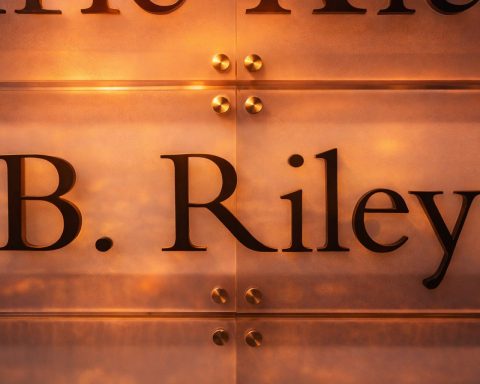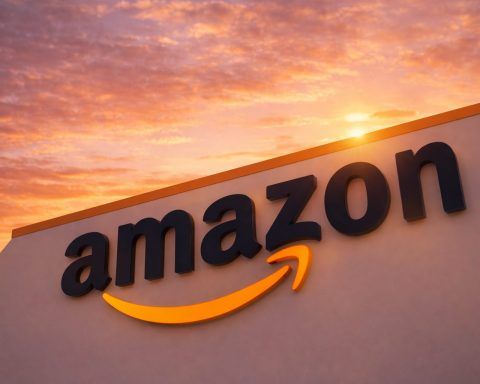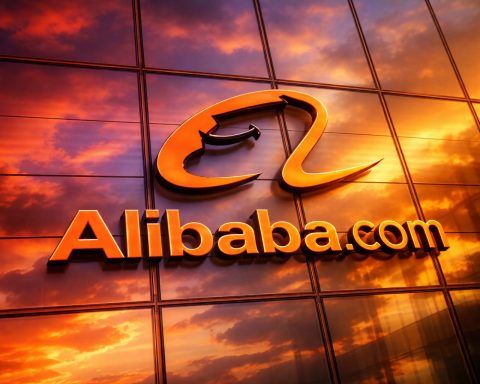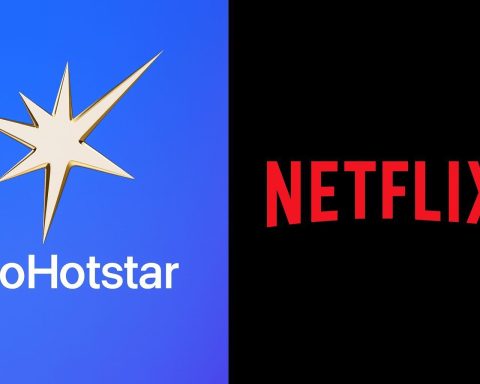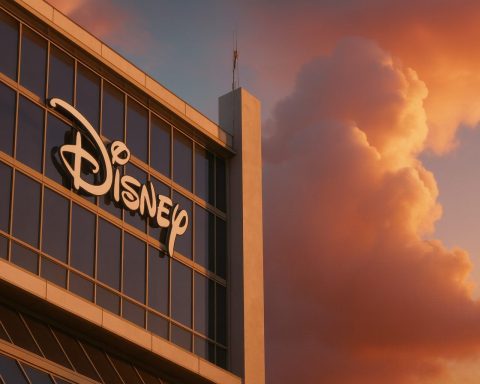- Warner Bros. Discovery announced plans to split into two companies—WBD Streaming & Studios and WBD Global Networks—by mid-2026 to sharpen focus and tackle debt from its 2022 megamerger, according to CEO David Zaslav.
- Oaktree Capital merged FilmRise and Shout! Studios to form Radial Entertainment, a distribution platform with roughly 70,000 film and TV titles, led by the two former CEOs to accelerate growth via acquisitions.
- In early June 2025, Fubo and DAZN announced a multi-year partnership to carry each other’s linear channels in the U.S., adding DAZN1 for boxing/MMA events and hosting Fubo Sports Network on the DAZN app.
- Verizon ended new +Play subscriptions on July 9, 2025, shifting focus to myPlan and myHome, with +Play having launched in 2022 and reaching about 30 partners and nearly 12 million total subscriptions by early 2024.
- Netflix and TF1 Group unveiled a first-of-its-kind deal to stream TF1 live channels inside the Netflix app for France starting in summer 2026, bringing live events and local programming into Netflix and giving TF1 about 24% of France’s TV viewership.
- Netflix began streaming live NASA content through a dedicated NASA+ channel in July 2025, with NASA’s service remaining free/ad-free on its own app and Netflix reaching more than 700 million users.
- Disney’s streaming strategy emphasized quality over quantity, with NBA games set to arrive on Disney+ in late 2025 and continued live-event focus to bolster Disney+ and Hulu.
- YouTube remained a dominant US streaming platform, becoming the largest by 2025 after surpassing 10% of total US TV usage in 2024, alongside Netflix, Hulu, and Prime Video.
- The ad-supported shift accelerated, with global AVOD revenue projected to grow about 14% CAGR through 2028 and ad-supported content accounting for 28% of global streaming revenue by 2028, while Netflix’s ad tier accounted for 55% of new sign-ups in markets where offered by mid-2025.
- India emerged as a hotbed for OTT, hosting 58 platforms with about 101 million paying subscribers, with Netflix naming India its second-largest source of subscriber growth in 2024 and predicting it will be the world’s fastest-growing OTT market through 2028.
June–July 2025 – The streaming wars kicked into high gear this summer, marked by blockbuster business moves, bold content strategies, shifting viewer habits, tech breakthroughs, executive insights, and legal showdowns. Below is a comprehensive roundup of the major developments in video-streaming and OTT media platforms worldwide over June and July 2025.
Business Developments and Corporate Moves
- Warner Bros. Discovery to Split in Two: In a bid to sharpen focus and tackle debt from its 2022 megamerger, Warner Bros. Discovery (WBD) announced plans to break up into two distinct companies – WBD Streaming & Studios (housing HBO, Warner Bros. Pictures, DC Studios and the Max streaming service) and WBD Global Networks (CNN, TNT Sports, Discovery channels, etc.) [1] [2]. CEO David Zaslav said the separation (to complete by mid-2026) will let each business be “faster and more aggressive” in seizing opportunities with a “sharper focus and strategic flexibility” [3]. The move echoes industry trends as media giants seek to offload legacy TV assets and double down on streaming amid cord-cutting [4].
- Major M&A in Content Distribution:Oaktree Capital merged two notable distributors – FilmRise (a digital streaming content library) and Shout! Studios – into a new entity, Radial Entertainment [5]. The combined platform boasts ~70,000 film & TV titles for global distribution, a scale its backers say is needed to “compete and win” in today’s digital entertainment landscape [6] [7]. The CEOs of Shout! and FilmRise are joining forces to lead Radial, aiming to leverage the merged catalog for aggressive growth via more acquisitions and partnerships [8] [9]. This follows a broader wave of consolidation as streaming players bulk up content libraries and archives to stay competitive.
- Sports Streaming Alliance – Fubo & DAZN: In early June, sports-centric streamer Fubo struck a multi-year partnership with global sports platform DAZN [10]. Under the deal, each will carry the other’s linear channels on their U.S. services – for example, Fubo subscribers gain access to a new DAZN1 channel featuring DAZN’s exclusive boxing/MMA events (available as an add-on or standalone offering), and DAZN’s app will host Fubo Sports Network (a free ad-supported channel with 400+ live events per year) [11] [12]. Executives hailed the tie-up as a win-win: “Fubo and DAZN’s partnership delivers more premium sports to fans, wherever they choose to watch,” said Fubo CEO David Gandler [13]. DAZN CEO Shay Segev noted it will “increase access to top-tier sports content” for U.S. viewers and expand Fubo’s FAST channel reach [14]. The alliance hints at further collaborations between the companies as they look to pool content and audiences in the fragmented sports streaming market [15].
- Streaming Marketplace Shake-Up – Verizon’s +Play Ends: U.S. telco Verizon decided to pull back on its streaming aggregation service +Play, which allowed customers to manage and bundle multiple subscriptions (Netflix, Hulu, Xbox Game Pass, Peloton, etc.) in one hub. Verizon announced it will stop selling new +Play subscriptions after July 9, 2025, shifting focus to its newer myPlan and myHome offerings [16]. A Verizon spokesperson noted +Play had “led the industry” in unifying entertainment, gaming, music and lifestyle subs, but the company has now “evolved our platform” with myPlan/myHome to offer top streaming services at exclusive discounts for Verizon mobile and home customers [17]. Launched in 2022, +Play had integrated over 30 partners and managed nearly 12 million content subscriptions by early 2024 [18]. While current users can keep managing their existing subs, the winding down of +Play reflects the challenges of the “streaming bundle” model – and signals a return to curated carrier bundles in a more streamlined form.
- Other Noteworthy Moves: Industry chatter continued around Paramount Global’s $8B deal to merge with Skydance Media, which was announced in mid-2024 and is expected to close by late 2025 [19]. The merger – creating a combined Paramount Skydance – aims to inject new capital and hit content franchises (like Mission: Impossible and Star Trek) into Paramount’s streaming push [20] [21]. Analysts see the deal as a critical lifeline for Paramount’s transition to streaming, providing a $6 billion cash infusion to pay down debt and invest in Paramount+ growth [22] [23]. Meanwhile, legacy media firms turned profitable in streaming after years of losses – by Q3 2024, all major studios except NBCUniversal had reported positive earnings in their direct-to-consumer divisions [24], thanks to cost-cutting, price hikes, bundling, and password-sharing crackdowns [25]. This set the stage for 2025’s “streaming first” strategies, with Wall Street rewarding those who “do whatever it takes to do what Netflix is doing” [26] in pivoting from linear TV to online models.
Content Strategy, Programming Highlights and Franchise Moves
- Netflix Blends Streaming with Live TV (France): In a groundbreaking content partnership, Netflix announced a deal with France’s TF1 Group to stream traditional live TV channels inside the Netflix app for French subscribers [27]. Starting in summer 2026, French users won’t need to leave Netflix to watch TF1’s free-to-air channels and on-demand content – it will be offered as part of their subscription [28] [29]. “This is a first-of-its-kind partnership that plays to our strengths of giving audiences the best entertainment alongside the best discovery experience,” said Netflix co-CEO Greg Peters [30]. The carriage deal means Netflix France subs can view major live events (sports matches, reality finales, etc.), hit local dramas and soaps, and popular unscripted shows (e.g. The Voice (France)) through Netflix’s interface [31]. Beyond adding value for users, analysts note this arrangement may help Netflix fulfill French regulations requiring investment in local content [32]. The deal – which effectively makes Netflix a distribution platform for a top broadcaster – signals a new hybrid model bridging streaming and linear TV, potentially a template for other markets as networks look to piggyback on streaming audiences [33]. TF1 holds ~24% of France’s TV viewership [34], so its presence on Netflix could draw traditional TV fans onto the streamer and vice versa.
- Space (and Sports) Enter the Streaming Chat: In a surprising crossover, NASA partnered with Netflix to launch a dedicated “NASA+” channel on the streamer, bringing space exploration into living rooms via OTT. Starting in July, Netflix began streaming live NASA content – rocket launches, astronaut spacewalks, mission coverage, and even a real-time Earth feed from the ISS (International Space Station) [35] [36]. NASA’s GM for digital, Rebecca Sirmons, said the agency’s mandate is to share space exploits with the broadest audience, and with Netflix reaching over 700 million people worldwide, this partnership flings the hatch open: “We’re committed to a Golden Age of Innovation and Exploration – inspiring new generations – right from the comfort of their couch,” she said [37]. Importantly, NASA+ remains free and ad-free on NASA’s own app and website [38]; on Netflix it’s included for subscribers, marking Netflix’s first foray into live non-fiction programming. This collaboration reflects streamers’ growing interest in live events beyond sports – though live sports are also a big piece of 2025’s content strategy. For instance, Netflix itself has diversified into sports content and even hosted special live events (like its first live sports docuseries and reportedly a boxing exhibition) [39] [40]. Disney’s streaming arm likewise secured more sports rights (NBA games coming to Disney+ in late 2025) as CEO Bob Iger emphasizes “must-have content” and live programming to bolster Disney+ and Hulu [41]. The blending of genres and formats – from space exploration to athletic competitions – shows how streaming platforms are expanding beyond on-demand films/series to become one-stop shops for all forms of entertainment.
- Franchise Fortunes – Hits and Misses: The summer saw streaming services leaning heavily on known franchises and originals to attract and retain viewers. Netflix’s summer 2025 slate featured the return of some of its biggest hits – notably a new season of the global phenomenon Squid Game – alongside fresh originals [42]. Meanwhile, Disney+ and Marvel content faced headwinds: recent high-profile series in the Star Wars and Marvel universes (like The Acolyte and Echo) struggled to sustain demand, signaling possible franchise fatigue [43]. This has prompted a recalibration at Disney; Iger has stressed quality over quantity, focusing on core franchises and selectively partnering (Disney even bundled Hulu with sports streamer ESPN+ and collaborated with WBD on certain distribution deals) [44]. Warner Bros. Discovery’s Max service, despite corporate flux, scored with its acclaimed titles (The Last of Us, The White Lotus, DC content) and continued an international rollout to 72 markets [45]. Amazon’s Prime Video kept investing in tentpoles (like its Lord of the Rings series and NFL Thursday Night Football rights) while also experimenting with niche originals and acquiring films for exclusive streaming runs. Apple TV+ rolled out season premieres of buzzy series (e.g. Foundation in July) as it grows its prestige catalog. In short, content strategy in mid-2025 has been a balancing act: doubling down on bankable franchises to drive subscriptions, while navigating viewer fatigue by diversifying into live content, documentaries, reality, and international programming.
- Original Programming and Creative Experiments: Streamers also tested new formats and interactive content. Netflix in Q1 released innovative titles like the conspiracy thriller Zero Day and unscripted social experiments (Too Hot to Handle spinoffs, etc.), which helped boost engagement [46]. Amazon’s Prime Video piloted choose-your-own-adventure-style specials and leveraged its Twitch ownership for interactive watch parties. HBO/Max eyed expansions of the Game of Thrones universe and greenlit a high-budget Harry Potter series (announced earlier in 2025) to capitalize on enduring fanbases. And in markets like India, OTT platforms tuned content strategy to local tastes – for example, more regional-language originals and family-friendly programming, anticipating regulation that may enforce broadcast-style guidelines on OTT [47]. Notably, Indian streamers also increased their ad-supported offerings, which influenced content formats (more short-form and snackable content to accommodate ad breaks) [48] [49]. Across the board, the hits and flops of summer 2025 underline that even streaming giants must constantly adapt their content mix: aging franchises need reinvention, new IP needs heavy marketing to cut through, and audiences are open to both big-budget spectacles and comfort-food TV – as long as it’s available on their favorite app.
Market Trends and Audience Behavior
- Streaming Overtakes Traditional TV: In a historic milestone, U.S. streaming usage in May 2025 exceeded cable and broadcast TV combined for the first time [50]. According to Nielsen’s The Gauge report, streaming accounted for 44.8% of total TV viewing in May, edging past the combined share of broadcast (20.1%) and cable (24.1%), which totaled 44.2% [51]. This “tipping point” illustrates how rapidly consumer behavior has shifted – five years ago, streaming was barely one-quarter of TV usage. Contributing factors include the proliferation of Smart TVs and CTV devices, more older audiences adopting streaming, and the fall of linear TV ratings as cord-cutting accelerates. Industry analysts hailed the moment as a bellwether: “The switch to online is clear,” notes Omdia’s Maria Rua Aguete, who predicts that by 2026 more households globally will watch free or ad-supported streaming content than broadcast television [52] [53]. Notably, YouTube continues to dominate viewing; it became the single largest TV streaming platform in the U.S. after surpassing 10% of total TV usage in 2024 [54], and remains a heavyweight in 2025 alongside Netflix, Hulu, and Prime Video.
- Ad-Supported Surge and “Subscription Fatigue”: As growth in paid subscriptions plateaus in many markets, free and ad-supported streaming is on a rapid upswing. Global AVOD revenue is projected to grow at ~14% CAGR through 2028, with advertising expected to make up 28% of global streaming revenue by that year (up from 20% in 2023) [55] [56]. In fact, online video advertising is already the largest source of revenue in the sector, outstripping subscription dollars [57]. This trend is visible on the ground: Netflix’s ad-supported tier – launched in late 2022 – gained serious traction by mid-2025, accounting for 55% of new sign-ups in markets where it’s offered [58]. Netflix reported that its cheaper ad plan helped it add subscribers even in a tough economy, and the company aims to “roughly double” its ad revenue year-on-year [59] [60]. Likewise, Disney+’s ad tier (introduced in late 2023) and Warner’s ad-lite options on Max have driven incremental user growth as price-sensitive viewers switch to lower-cost plans. Surveys indicate consumers are reaching a limit on how many paid streaming services they’ll stack – Deloitte observed U.S. households hit a high of about 4 subscriptions on average in 2024, and expects “SVOD stacking has reached its limit and will start declining in 2025.” [61] This has opened the door wide for FAST (Free Ad-Supported TV) services and hybrid models. Platforms from Pluto TV to Samsung TV Plus to local broadcaster-owned FAST channels have multiplied. Even in Europe and Asia, where pay-TV once dominated, viewers are embracing free streaming alternatives amid subscription fatigue. PwC projects that while OTT subscription counts will keep rising (2.1 billion global subs by 2028, up from 1.6B in 2023), the average revenue per subscription will barely budge [62] – meaning growth will come from volume and ads, not higher spending per consumer. The ad-supported surge is reshaping content strategies (more mid-length content, reruns, and live channels ideal for ads) and prompting streamers to refine their mix of free vs. paid offerings.
- Case Study – India’s Hybrid OTT Boom: Nowhere is the pivot to ad-supported models more evident than India, one of the fastest-growing streaming markets. After a pandemic-era boom in paid subscriptions, Indian OTT viewers are swinging back toward free content, according to media analyses [63]. With disposable incomes limited in Tier 2 and Tier 3 cities, many consumers have become price-sensitive and are gravitating to services that offer free access with ads, or “hybrid” plans that mix free and premium content [64]. As one Indian media executive put it, “India isn’t just ready for AVOD – it’s leading the way” [65]. Unlike in the West where audiences bristle at ads, Indian digital viewers show high tolerance for ad-supported services if it means free entertainment [66]. Experts note this doesn’t spell the end of paid SVOD – rather, the market is segmenting: a smaller core of high-ARPU subscribers stick with premium, ad-free plans, while the masses flock to cheaper tiers [67]. To scale sustainably, OTT platforms in India are blending “premium storytelling with accessible monetization” – offering various price points, sachet plans (e.g. mobile-only packs), and lots of free content to hook users [68]. The result: India now hosts 58 OTT platforms (about half are regional-language focused) serving ~101 million paying subscribers, yet even more viewers on free streaming platforms [69]. The market is “ripe for consolidation” in coming years as too many players chase the ad pie [70]. Global streamers see enormous untapped potential; Netflix identified India as its second-largest source of subscriber growth in 2024 and has “barely scratched the surface there” for future gains, according to Ampere Analysis [71]. The country is expected to be the world’s fastest-growing OTT market through 2028 [72]. This reflects a broader Asia-Pacific opportunity: from 2025 onward, international streamers are increasingly looking to APAC regions (India, Indonesia, etc.) to fuel the next phase of subscriber growth [73], as North America and Europe near saturation.
- Audience Engagement and Retention Trends: With so much content and so many platforms vying for attention, the industry focus has shifted from raw subscriber counts to engagement and retention metrics. At the June StreamTV Show conference, executives agreed that the era of chasing “views” and viral hits is giving way to prioritizing long-term user loyalty and lifetime value [74]. The key is keeping viewers subscribed month after month. Services are employing tactics like personalized recommendations, better user experience (e.g. improved UIs and cross-platform sync), and community-building around content (watch parties, social features) to deepen engagement. One media exec explained that “Viewership alone isn’t enough anymore. It’s about creating value for both the viewer and the business.” [75] Streamers are analyzing watch patterns to reduce churn – for instance, ensuring there’s always a new episode or relevant title queued up for each user. The push for engagement is also why franchises and familiar IP are golden; they keep subscribers on the hook. Binge-release strategies are being rethought too: some platforms returned to weekly episode drops or mid-season breaks to stretch engagement and reduce churn immediately after a big show’s finale. On the flip side, “streaming fatigue” has been noted as consumers feel overwhelmed by content overload and app fragmentation. This has sparked talk of a return to aggregation – e.g. telecoms or device-makers bundling multiple streaming services into one interface and bill (akin to the cable model) [76] [77]. Deloitte anticipates a new era of aggregation that could simplify the user experience and help with content discovery across siloed services [78] [79]. All these trends underscore a maturing market: success now hinges not just on adding subscribers, but on keeping them engaged and satisfied in the long run.
Technology Innovations: AI, Personalization and Distribution
- AI Transforms Localization and UX: This summer saw streaming platforms harnessing artificial intelligence to enhance content accessibility and user experience. Amazon’s Prime Video began testing AI-assisted dubbing on a selection of movies and shows, using AI-generated voices combined with human oversight to dub titles into new languages [80] [81]. In a March pilot, Prime Video added English and Latin-American Spanish dubs to 12 previously untranslated films (such as Spanish animated film “El Cid: La Leyenda”) using this AI-human hybrid approach [82] [83]. The goal is to broaden content availability without the high cost and time of traditional dubbing. Other streamers are on a similar path – Paramount+ has worked with AI dubbing startup Deepdub to localize content [84], and YouTube recently launched an auto-dubbing feature that lets creators automatically translate their videos into multiple languages [85]. Beyond dubbing, AI is boosting features like Amazon’s “X-Ray Recaps” (AI-generated episode summaries for quick catch-up) and “Dialogue Boost” (an AI-driven audio mode to enhance spoken dialogue) [86]. These innovations use machine learning to make content more user-friendly – e.g. summarizing a whole season in seconds or leveling audio for clarity.
- Next-Gen Personalization and Recommendations: AI-driven recommendation engines have become standard, but 2025’s algorithms are smarter and more real-time than ever. Streaming platforms are now leveraging machine learning on viewer data to curate not just what content you see, but how you see it. For example, if a user tends to binge thrillers on weekends, the app can automatically download a curated weekend thriller playlist in advance. At StreamTV Show 2025, experts shared case studies where AI significantly boosted watch time and ad revenue by micro-targeting content offerings [87] [88]. Discussions moved beyond the hype to ROI: one panelist noted, “We’ve moved from ‘why AI?’ to ‘how AI can impact our bottom line.’” [89] AI is now a “core driver” of viewer satisfaction and platform profitability, used for everything from dynamic UI layouts (showing each user the titles they’re most likely to click) to predictive caching of content to avoid buffering. Netflix’s famed algorithm continues to evolve with AI by analyzing scene-level preferences (e.g. if a user skips slow scenes, Netflix might recommend more fast-paced content). Disney+ has been working on AI tools to tailor marketing art – showing different cover images to different demos – and to predict which dormant subscribers are likely to re-engage with a targeted email. On the advertising side, addressable ads on streaming are getting a boost from AI that better matches ads to viewer profiles, improving efficiency for advertisers and relevance for viewers. This was exemplified by the Amazon–Roku partnership, which uses a custom identity resolution AI to recognize viewers across devices and limit repetitive ads [90] [91] (early tests showed it cut ad frequency per user by ~30% while increasing unique reach [92] [93]). All told, AI in streaming has matured from experimental to essential – powering everything behind the scenes from content localization to churn prediction to interactive features.
- Advertising Tech and Partnerships: A landmark ad tech alliance was forged in June between Roku and Amazon Ads, aiming to create the largest authenticated CTV advertising footprint in the U.S. [94] [95]. Under an exclusive integration, Amazon’s demand-side ad platform (DSP) becomes the primary way to buy addressable ads across Roku’s streaming inventory, combining Amazon’s and Roku’s first-party data. This partnership promises advertisers logged-in reach to an estimated 80 million U.S. CTV households – over 80% of all streaming homes – via Amazon’s DSP [96] [97]. In practice, an advertiser can now execute one campaign and have their ads targeted across The Roku Channel, Amazon’s own Prime Video and Freevee, and other top apps on Roku and Fire TV devices (including third-party streamers like Disney’s and Paramount’s apps) [98]. The integration uses AI-driven identity matching to deterministically reach the same viewer across different apps and devices without duplication [99] [100]. Roku’s President Charlie Collier said this “unprecedented scale” unified solution will deliver measurable outcomes and eliminate waste, noting nearly half of all U.S. streaming time happens on Roku devices and touting Amazon’s strengths in retail data [101] [102]. Advertisers in early trials reached 40% more unique viewers for the same spend and saw three times higher ROI, thanks to better frequency capping and cross-platform targeting [103] [104]. The partnership, set to be fully available by Q4 2025, exemplifies how tech giants are teaming up to solve CTV advertising’s fragmentation – making it more like the one-stop buys of traditional TV, but with the precision of digital. We’re also seeing international collaborations on the ad front: in the UK, rivals Sky, ITV, and Channel 4 announced plans for a joint addressable advertising marketplace launching in 2026 [105] [106]. Backed by Comcast’s ad tech, this marketplace will let brands (especially small/medium advertisers new to TV) run a single ad campaign across all three streamers’ on-demand inventories with unified targeting and biddable pricing [107] [108]. It underscores a spirit of cooperation among broadcasters to compete with digital ad giants and lower the bar for entry into TV advertising.
- FASTs and Rethinking “Free TV”: The gold rush in Free Ad-Supported Streaming TV (FAST) channels continued, but with a more strategic lens. In 2024 we saw dozens of new FAST channels (often built around nostalgia TV, movie genres, or single IPs) launching monthly. By mid-2025, content owners have realized FAST is a means, not an end [109] [110]. Panels at StreamTV Show cautioned that the FAST space is getting crowded and commoditized, making discoverability tough for smaller players [111] [112]. The advice: use FAST channels as a top-of-funnel to attract broad audiences, then funnel viewers to premium offerings for deeper monetization [113]. “Use FAST to reach broad audiences, then funnel them into your branded OTT environment,” a Gizmott exec explained, emphasizing the importance of eventually bringing viewers onto platforms where you control the experience and data [114] [115]. This hybrid approach is gaining traction – for instance, a niche studio might run a free 24/7 channel of older series on Pluto TV, but constantly promote its own SVOD app there for viewers to get newer seasons or an ad-free experience. Device makers (Samsung, LG, Vizio) have also doubled down on FAST integration, making their smart-TV home screens mimic cable guides with 100+ free streaming channels. But with oversupply, there’s talk of a “FAST bubble”: reports of some channels with tiny viewership and advertisers starting to cherry-pick only the top channels. The likely outcome is an evolution, not a burst – expect consolidation of smaller FAST channels and more curation by platforms to ensure quality. In effect, the definition of “TV channel” is being reinvented, and the line between a FAST channel and a traditional linear network is blurring (indeed, many cable networks now have FAST versions).
- Distribution and Device Ecosystems: On the distribution front, device and platform power plays continued. Tech giants like Amazon, Apple, and Google (Chromecast/Android TV) are leveraging their ecosystems to get preferential treatment for their streaming offerings (e.g., Amazon integrating Prime Video deep into Fire TV’s UI). Telecom operators in Europe and Asia have started packaging streaming apps into their set-top boxes, and some (like Verizon, as noted) tried their own marketplaces. We’re also seeing pushback in some cases: France’s Canal+ made news in July by declaring it won’t carry France’s new Ligue 1 football streaming service on its platform [116], reflecting tensions when traditional distributors feel sidelined by leagues going direct-to-consumer. Meanwhile, telcos selling off TV units (Telia in Nordic countries completed a sale of its Pay-TV/streaming business [117]) shows that connectivity providers are focusing on broadband and leaving content aggregation to others. In positive news for consumers, profiles and cross-device syncing are becoming more standard – the dream of starting a show on your phone and seamlessly continuing on your TV is largely reality now across major services. And some platforms introduced bandwidth-saving tech (like EE’s new “Stream Mode” for mobile video [118]) to help users manage data while streaming on the go. All these technical enhancements aim to make streaming more accessible, reliable, and integrated into daily life than ever.
Executive and Analyst Insights
Industry leaders and observers offered candid insights into these trends over the past two months:
- Greg Peters, Netflix Co-CEO: Expressed confidence in streaming’s resilience even amid economic uncertainty. Netflix hasn’t seen consumers cutting back on its service despite inflation, noting “demand [for entertainment] remains strong” and Netflix’s mix of lower-cost plans helps it weather downturns [119] [120]. Peters emphasized Netflix’s focus on improving the value of its offering and highlighted that the ad-supported tier is bringing in a new wave of cost-conscious subscribers [121].
- David Zaslav, WBD CEO: On splitting the company, Zaslav said operating as two focused entities will let “these iconic brands [HBO, Warner Bros., CNN, etc.] compete most effectively in today’s evolving media landscape”, by giving each the agility to pursue its own strategic priorities [122]. He framed the move as undoing the big conglomerate structure in favor of flexibility, implicitly acknowledging that servicing legacy TV and cutting-edge streaming under one roof proved challenging.
- Bob Iger, Disney CEO: Reiterated that Disney’s streaming strategy is pivoting to “quality over quantity.” He told investors that chasing subscriber count with excess content was less important than ensuring Disney+ is an indispensable, must-have service with marquee content (think Marvel, Star Wars, Pixar) and live events (like sports) that people are willing to pay for [123]. Iger also hinted at more cost discipline in content spending and openness to content sharing (as seen by licensing some series to third parties to monetize library content).
- Lucas Manfredi, industry reporter (TheWrap): Noted the significance of Netflix’s French TF1 deal as “setting the stage for a new streaming-linear TV model” [124]. By integrating live broadcast channels, Netflix is blurring the line between OTT and traditional TV, an approach that could be replicated elsewhere to attract older demographics to streaming.
- Horacio Gutierrez, Disney’s Chief Legal Officer: In the context of Disney’s copyright lawsuit against an AI firm, he championed creative rights, stating “piracy is piracy, and the fact that it’s done by an AI company does not make it any less infringing.” [125] This underscores Hollywood’s resolve to protect its IP even as new technologies like generative AI emerge.
- Kim Harris, NBCUniversal General Counsel: Joined Disney in that suit, emphasizing they sued to “protect the hard work of all the artists… and the significant investment we make in our content.” [126]. It’s a clear message that studios will fight uncompensated use of their characters via AI, setting precedents that could affect how AI can be used in content creation or promotion.
- Paul Kotas, Amazon Ads SVP: Celebrated the Amazon-Roku ad deal as a “giant leap for advertisers”, saying it removes guesswork and brings “unprecedented capabilities” by unifying two huge streaming audiences [127]. He pitched it as delivering “three times more value” for ad spend through better targeting and frequency management [128] [129].
- Priya Dogra, Sky (Comcast) Advertising Chief: On the UK broadcasters’ ad marketplace, she said success in the evolving TV ad market “will require collaboration, simplification, and innovation”, highlighting the importance of traditional competitors working together to attract new advertisers to TV [130]. ITV’s commercial director Kelly Williams echoed that making TV “easy to plan, buy and measure” for both big and small advertisers is critical [131].
- Maria Dunleavey, Ampere Analysis Research Manager: Pointed out the huge opportunity in India for Netflix and others, noting “India was Netflix’s second-largest subscriber growth market in 2024” yet remains far from saturated [132]. Her insight reinforces why giants are investing in local content and pricing innovation in South Asia.
- Mark Loughney, Hub Entertainment Research: Predicted that at least one “second-tier” streamer (he named Max, Paramount+ or Peacock) might cease to exist as a standalone service by the end of 2025, via merger or acquisition [133]. This reflects a common view that the marketplace may not support the current glut of mid-sized services – consolidation is inevitable.
Legal and Regulatory Updates Impacting Streaming
- Studios Sue AI Firm Over Copyright: In a landmark legal action, Disney and Universal Studios filed a joint lawsuit against AI image-generator Midjourney in June, alleging wholesale copyright infringement of their characters [134] [135]. The 110-page complaint (filed in U.S. federal court in Los Angeles) brands Midjourney’s popular AI image tool a “bottomless pit of plagiarism” for reproducing iconic characters – from Disney’s Darth Vader and Elsa to Universal’s Minions and Shrek – without permission [136] [137]. The studios claim Midjourney scraped their libraries and churned out innumerable knockoff images, violating IP law. They are seeking a preliminary injunction to stop Midjourney from using or generating any likenesses of their protected characters, as well as unspecified damages [138]. This suit marks the first major strike by Hollywood studios over AI-generated visual content, expanding the battleground of AI copyright fights (which so far had focused on text and music) into the realm of images and video [139] [140]. Disney’s legal chief noted they remain bullish on AI’s potential when used responsibly, but warned “the fact that it’s done by an AI company does not make it any less infringing” if it amounts to theft of creative IP [141]. Legal analysts say the case could set crucial precedents for how far generative AI models can go in mimicking or training on copyrighted visual media. A ruling in favor of Disney/Universal might compel AI firms to implement filters or licensing for well-known characters; conversely, if Midjourney prevails under fair use arguments, studios might push for new legislation. The case underscores a broader regulatory question: how to balance innovation in AI with protection of creative rights – a debate regulators in the EU and elsewhere are closely watching as they draft AI oversight rules.
- Antitrust and Mergers: Regulators continued to scrutinize big media deals for competition concerns. The Paramount–Skydance merger, if it closes, is expected to draw review since it consolidates a major Hollywood studio with a fast-growing production company. However, given the dynamic OTT marketplace (with Netflix, Amazon, Disney as dominant forces), this tie-up may be seen as shoring up a weaker player rather than reducing consumer choice. In the U.S., the FTC and DOJ have been reevaluating media consolidation rules, but no new legislation emerged in June–July. In Europe, the EU Commission signaled interest in ensuring U.S. streamers abide by local content quotas and data privacy standards; France’s CSA, for instance, was satisfied with Netflix’s TF1 deal as it keeps investment in French content flowing [142]. One notable development: Comcast’s plan to spin off its domestic cable channels (announced in 2024, to form a new company “Versant”) is proceeding, with expectations that a lighter regulatory touch will apply since it separates content from distribution [143].
- Telecom & Streaming Regulations: Around the world, telecom regulators are examining the relationships between internet providers and streaming services. In South Korea and EU countries, ISPs lobbied for streamers to contribute to network costs (so-called “fair share” payments) due to the heavy bandwidth burden of video traffic; no consensus yet, but talks continued into 2025. Net neutrality debates also resurfaced as some ISPs offered “zero-rating” for their own or partnered streaming apps – regulators are watching to ensure a level playing field for all OTT services. On the flip side, aggregation trends might invite regulatory guidance: if companies bundle multiple streaming services (as Amazon does with Prime Channels, or Apple with Apple TV app), consumer groups want transparency on pricing and the ability to cancel easily.
- Content Regulation and Censorship: Governments kept a close eye on streaming content. In India, the government weighed a proposal for an OTT broadcast code that would enforce age ratings and possibly moderate content more like television [144]. Streamers responded by self-regulating with clearer content descriptors and even “family-friendly” filters on some platforms to preempt stricter rules. In the Middle East and parts of Asia, a few global streamers faced pressure to censor or remove content that violated local cultural norms, illustrating the ongoing push-pull between global platforms and national content laws.
- Consumer Protection: Finally, in the U.S., several states were considering legislation on subscription cancellations, often dubbed the “click to cancel” rule – requiring that services let users cancel online with equal ease as they signed up (to combat dark patterns that trap subscribers). California’s law in this regard took effect, impacting OTT providers among others. This has led streaming platforms to simplify their cancellation processes and be more upfront about renewal terms to stay compliant.
Sources: Major industry news outlets, company releases and analyst reports from June–July 2025 were used in compiling this report. Key references include Axios (Jun. 10, 2025) on WBD’s split [145] [146], The Wrap and Advanced Television for partnership and M&A news [147] [148], The Verge on Netflix’s France deal [149], Guardian Technology (Jun. 11, 2025) on the Disney/Universal AI lawsuit [150] [151], Nielsen’s The Gauge via BroadbandTV News (Jun. 18, 2025) for viewing share stats [152], Storyboard18 (India) on OTT ad trends [153] [154], StreamingMedia.com for year-in-review analysis and forecasts [155] [156], and more. Each development is linked to its source for further reading.
References
1. www.axios.com, 2. www.axios.com, 3. www.axios.com, 4. www.axios.com, 5. www.advanced-television.com, 6. www.advanced-television.com, 7. www.advanced-television.com, 8. www.advanced-television.com, 9. www.advanced-television.com, 10. www.thewrap.com, 11. www.thewrap.com, 12. www.thewrap.com, 13. www.thewrap.com, 14. www.thewrap.com, 15. www.thewrap.com, 16. www.thewrap.com, 17. www.thewrap.com, 18. www.thewrap.com, 19. wingding.tv, 20. wingding.tv, 21. wingding.tv, 22. wingding.tv, 23. wingding.tv, 24. www.streamingmedia.com, 25. www.streamingmedia.com, 26. www.streamingmedia.com, 27. www.theverge.com, 28. www.theverge.com, 29. www.theverge.com, 30. www.theverge.com, 31. www.theverge.com, 32. www.theverge.com, 33. www.theverge.com, 34. www.theverge.com, 35. www.advanced-television.com, 36. www.advanced-television.com, 37. www.advanced-television.com, 38. www.advanced-television.com, 39. wingding.tv, 40. wingding.tv, 41. wingding.tv, 42. www.tvguide.com, 43. wingding.tv, 44. wingding.tv, 45. www.streamingmedia.com, 46. www.reuters.com, 47. www.storyboard18.com, 48. www.storyboard18.com, 49. www.storyboard18.com, 50. www.mangomolo.com, 51. www.mangomolo.com, 52. www.streamingmedia.com, 53. www.streamingmedia.com, 54. www.streamingmedia.com, 55. www.streamingmedia.com, 56. www.streamingmedia.com, 57. www.streamingmedia.com, 58. www.reuters.com, 59. www.reuters.com, 60. www.reuters.com, 61. www.streamingmedia.com, 62. www.streamingmedia.com, 63. www.mangomolo.com, 64. www.mangomolo.com, 65. www.storyboard18.com, 66. www.storyboard18.com, 67. www.storyboard18.com, 68. www.storyboard18.com, 69. www.streamingmedia.com, 70. www.streamingmedia.com, 71. www.streamingmedia.com, 72. www.streamingmedia.com, 73. www.streamingmedia.com, 74. gizmott.com, 75. gizmott.com, 76. www.streamingmedia.com, 77. www.streamingmedia.com, 78. www.streamingmedia.com, 79. www.streamingmedia.com, 80. techcrunch.com, 81. techcrunch.com, 82. techcrunch.com, 83. techcrunch.com, 84. techcrunch.com, 85. techcrunch.com, 86. techcrunch.com, 87. gizmott.com, 88. gizmott.com, 89. gizmott.com, 90. www.advanced-television.com, 91. www.advanced-television.com, 92. www.advanced-television.com, 93. www.advanced-television.com, 94. www.advanced-television.com, 95. www.advanced-television.com, 96. www.advanced-television.com, 97. www.advanced-television.com, 98. www.advanced-television.com, 99. www.advanced-television.com, 100. www.advanced-television.com, 101. www.advanced-television.com, 102. www.advanced-television.com, 103. www.advanced-television.com, 104. www.advanced-television.com, 105. www.advanced-television.com, 106. www.advanced-television.com, 107. www.advanced-television.com, 108. www.advanced-television.com, 109. gizmott.com, 110. gizmott.com, 111. gizmott.com, 112. gizmott.com, 113. gizmott.com, 114. gizmott.com, 115. gizmott.com, 116. www.advanced-television.com, 117. www.advanced-television.com, 118. www.advanced-television.com, 119. www.reuters.com, 120. www.reuters.com, 121. www.reuters.com, 122. www.axios.com, 123. wingding.tv, 124. www.thewrap.com, 125. www.theguardian.com, 126. www.theguardian.com, 127. www.advanced-television.com, 128. www.advanced-television.com, 129. www.advanced-television.com, 130. www.advanced-television.com, 131. www.advanced-television.com, 132. www.streamingmedia.com, 133. www.streamingmedia.com, 134. www.theguardian.com, 135. www.theguardian.com, 136. www.theguardian.com, 137. www.theguardian.com, 138. www.theguardian.com, 139. www.theguardian.com, 140. www.theguardian.com, 141. www.theguardian.com, 142. www.theverge.com, 143. www.axios.com, 144. www.storyboard18.com, 145. www.axios.com, 146. www.axios.com, 147. www.thewrap.com, 148. www.advanced-television.com, 149. www.theverge.com, 150. www.theguardian.com, 151. www.theguardian.com, 152. www.mangomolo.com, 153. www.storyboard18.com, 154. www.storyboard18.com, 155. www.streamingmedia.com, 156. www.streamingmedia.com

